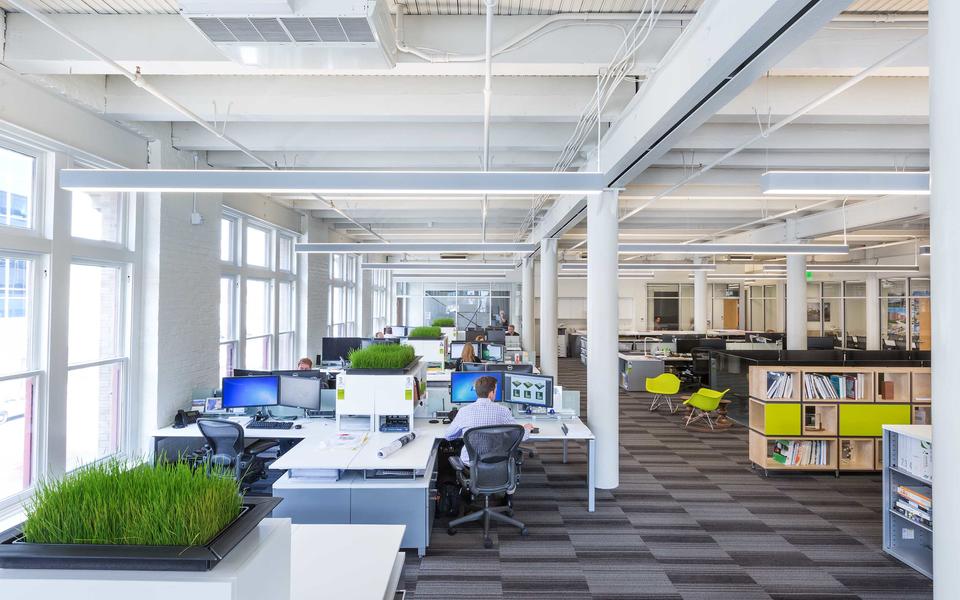High performance & sustainability
Recently, I was asked, “Can contractors really make a difference with sustainability and high performance?” I was surprised by the question because it seemed rather old-school to me. We’ve come a long way in our design and construction practices. Today, the preconstruction process is more integrated and more fluid, providing plenty of opportunity for contractors to impact the outcome.
Gone are the days where we sit idle waiting for drawings from the architect. We are pulled into the design process earlier. We are seeing positions like “design phase manager” being created, and we are hiring the architect through design-build contracts. Aside from the design of the facility, according to environmental studies that have been done, the largest contributor to greenhouse gases is construction - when we are putting the work in place.
This question made me realize that there is still a ways to go in educating, and thus, challenging ourselves to think more holistically. Those of us in construction are in a profound position to transform the world around us.
Construction’s impact on the environment
What kind of impact are we talking about?
- The World Resources Institute published a report titled Material Flows in the United States. It’s the third in a series that measures our efforts toward sustainability by material flowing in and out of the United States industrial economy. They concluded that total material consumption per capita increased in the 25-year study period, with a majority of the growth coming from an 83-percent increase in built infrastructure. Sadly, the most environmentally harmful outputs—synthetic and persistent organic chemicals, radioactive compounds, and heavy metals increased by 24 percent.
- According to the Environmental Protection Agency (EPA), the US construction industry accounts for 160 million tons, or 25 percent, of non-industrial waste generation a year.
- According to The Impacts of Construction and the Built Environment, by Willmott Dixon, the construction industry consumes half of non-renewable resources, making it one of the least sustainable industries in the world. [download]
Contractors directly affect climate change through greenhouse gas emissions
- in the constructability of a building (leaking buildings = wasted energy)
- through the diesel engines of the equipment that are used to build the building
- through the construction waste that ends up in landfills and turns into methane
It’s time for us to take responsibility for our portion of greenhouse gas emissions!
Cause/effect of the environment on our health
At Pepper, we’ve moved the conversation beyond the sustainability of our buildings to the sustainability of those who inhabit them, because the health of our environment is closely tied to the health of our bodies.
The more global warming we have, the more extreme weather events we experience, which leads to increased exposure to viruses and a depletion of the resources on which we depend. For our health, the more greenhouse gases in our air means we breathe more pollution… and the sicker we become.
Minimizing our risk helps everyone
We know that sustainability isn’t a choice anymore. Regulations or not, what we do impacts our environment so we have a stake in the game. Toxic materials and climate change affect our work too. Construction pollution presents risk, safety and health implications for all of us.
Fortunately, there are several areas in which we are already succeeding without even thinking about it – simply because it’s the right thing to do.
- We reference the Mindful Materials database, which was started within our industry to search for alternative healthy materials.
- When we’re involved early enough, we recommend performance based energy modeling and lifecycle cost analysis so owners can evaluate total cost of ownership, considering future operational costs along with construction costs.
- Our Nothing Hits the Floor program limits the amount of time materials are stored on site. Benefits include improved indoor air quality, a cleaner and safer jobsite and improved productivity.
- A no-idle policy is healthier, and it doesn’t cost anything to turn off the engines.
- Reuse and recycling keeps our sites organized and diverts waste away from landfills.
What else can we do?
More and more, contractors are invited to the design table early. It’s an opportunity to add value and impact performance both during construction and in the lifecycle of the building.
- We can engage in the conversation to direct different choices. For example, architects care about aesthetics so if we can suggest a material that looks the same but is healthier and more cost effective, it’s a win/win.
- We can enhance the building product by providing healthier and higher performing alternatives, thus increasing the building's lifespan and reducing future maintenance costs to the owner.
- We can get involved in pre-planning for weather to minimize the impact on our work.
- Through logistics planning, contractors can minimize carbon, energy, water and waste throughout the construction process.
- Contractors can minimize waste and inefficiencies through prefabrication, collaborative whole team project planning and on site recycling.
- Community outreach, including communicating updates, increasing green awareness and providing jobs for neighbors are ways that we can improve the communities our projects serve.
- Monitoring the building’s usage and performance through BIM asset management, energy management systems and as-built performance modeling can help ensure the building is performing how it was designed.
Sustainability is not new, and I believe within the next five years high performance and resiliency will be just as common as LEED is today. It isn't about implementing another checklist; it’s how buildings get built. And companies that don't plan for it will be left behind.
Our collective future
At Pepper, our services are integrated with each other because estimating, safety, quality, sustainability… they’re all tied together.
I follow leading organizations like the Harvard School of Public Health and developments like the Paris Agreement on climate change. It’s exciting to see the world recognize the need for change and take steps to get there. But we don’t have to wait for change to come from the top, down. It can start with us. If each of us reduces our impact, we can put in place a movement and pay it forward for generations to come.
I came to Pepper from the design side. As an architect working with different general contractors, I saw some of them recommend alternative, unhealthy materials and products because they didn’t know any better. Contractors who are aware of environmental impacts have the opportunity to influence our projects and our industry through the construction process, as much or more than design firms.
So, can a general contractor really impact the performance and sustainability of our buildings? Yes, without a doubt. It’s why I joined Pepper.
About the Author






